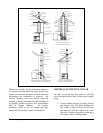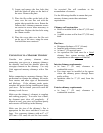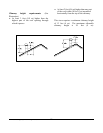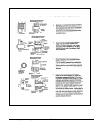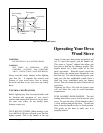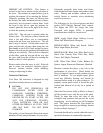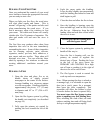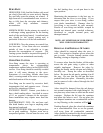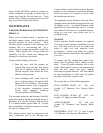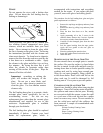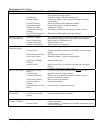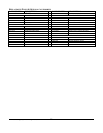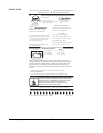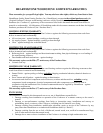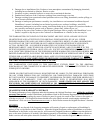
HearthStone Quality Home Heating Products Inc ® Model 8220
23
Ashes should NEVER be placed in wooden or
plastic containers, or in paper or plastic bags, no
matter how long the fire has been out. Coals
within a bed of ashes can remain hot for several
days once removed from the firebox.
MAINTENANCE
CREOSOTE FORMATION AND NEED FOR
REMOVAL
When wood is burned slowly, it produces tar
and other organic vapors, which combine with
expelled moisture to form creosote. These
creosote vapors condense in the relatively cool
chimney flue of a slow-burning fire. As a
result, creosote residue accumulates on the flue
lining. When ignited, this creosote makes an
extremely hot fire, which may damage the
chimney or even destroy the house.
To prevent the buildup of creosote:
1. Burn the stove with the primary air
control fully open and the flue bypass
open for 30 minutes daily to burn out
creosote deposits from within the stove
and the venting system.
2. After reloading with wood, burn the
stove with the primary air control fully
open for 20 to 30 minutes. This manner
of operation ensures early engagement
of the secondary combustion system
which, when engaged, minimizes
creosote buildup in the chimney.
The stovepipe connector and chimney should be
inspected regularly during the heating season to
determine if a creosote build-up has occurred.
If a creosote residue greater than 1/4" (6 mm)
has accumulated, it should be removed to reduce
the risk of a chimney fire.
The venting system must be inspected at the
stove connection and at the chimney top.
Cooler surfaces tend to build creosote deposits
quicker, so it is important to check the chimney
at the top (where it is coolest) as well as from
the bottom near the stove.
Accumulated creosote should be removed with a
cleaning brush specifically designed for the type
of chimney in use. A certified chimney sweep
should be used to perform this service. Contact
your dealer for the name of a certified chimney
sweep in your area (your dealer may be a
certified sweep!).
GASKETS
Gasket material should normally be replaced
every two to three seasons, depending on stove
use. If the door seal is loose, a new gasket will
assure a tight seal and improved stove
performance. Contact your dealer for a gasket
kit, which includes instructions, and gaskets for
your stove.
To replace the fuel loading door gasket, first
remove the old gaskets with a utility or putty
knife. Clean all gasket channels with a wire
brush. Apply gasket cement to the channels and
push the new gasket into place without
stretching the gasket material. The door should
be shut immediately to fully press the gasket
into place and assure a positive seal.
We require the use of the following gaskets:
FUEL LOADING DOOR: 40" (102 cm)
Length, 1/4" Diameter, Low Density Black
Rope
FUEL LOADING GLASS: 40" (102 cm)
Length, 3/4" adhesive backed flat tape
ASH PAN DOOR: 40" (102 cm)
Length, 1/4" Diameter, Low Density, Black
Rope
REVERSIBLE FLUE: 28" (71 mm) Length,
1/4" Diameter, Low Density, Black Rope



